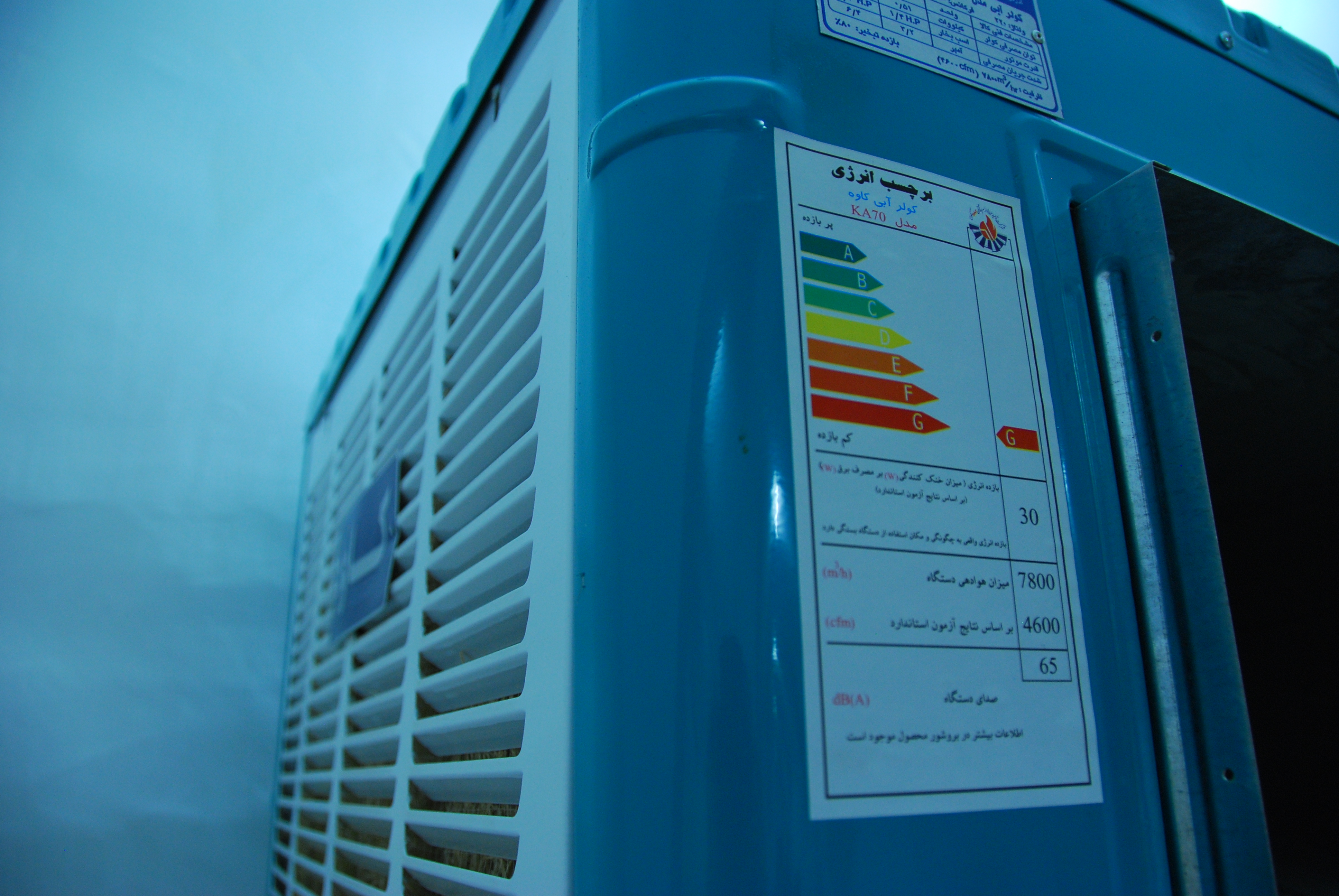
Air conditioner in a mosque in Isfahan with a European energy efficiency rating table.
According to the International Energy Agency (IEA), energy efficiency is defined as something that “delivers more services for the same energy input, or the same services for less energy input”. The IEA argues that “energy efficiency represents the most important plank in efforts to decarbonise the global energy system and achieve the world’s climate objectives: in the IEA scenario consistent with limiting the long-term increase in global temperatures to no more than 2 degrees Celsius, the biggest share of emissions reductions – 40% – comes from energy efficiency”. It is one of the most important strategies for reducing Greenhouse Gas emissions and controlling energy demand as our economies grow and develop.
Although energy efficiency measures often bring net benefits to society – including reduced pressure on energy systems, decreased greenhouse gas emissions, reduced pollution from fossil fuel combustion, and economic savings to energy consumers – these projects are not invested in as often as one would expect.
So, what is keeping us from investing in energy efficiency?
Energy efficiency measures may not be adopted for several reasons:
- Agency Relationships / Split Incentives: Those who design, construct, and maintain buildings and infrastructure are not always the same agents that pay the electricity bills.
Building managers and owners do not receive the economic benefits from the additional up-front costs of energy efficient technology if the space is rented or leased to others.
- Information Barrier: Many consumers may not know or understand the true benefits of all of the choices they are making, nor do they always know all of the options available to them.
Consumers may not understand how much energy is saved between one efficiency rating and another, or how much more they should pay up-front for a more efficient appliance.
- Aggregate Impact: The savings may be small per person, yet cumulatively, they may add up to significant energy savings.
The disperse nature of energy efficiency initiatives makes them difficult to organize; hundreds or thousands of small projects may need to be undertaken to create significant impact.
- Payback Time-Frame: If the activity requires a large initial investment and the payback occurs over a long time-frame (typically understood as more than 2 or 3 years), it may not sound interesting.
An energy efficient product may cost slightly more up-front, whereas the savings is spread throughout the entire life cycle of the product. Customers must be able to appreciate this long-term net savings. For some energy efficient projects, companies and public entities may receive larger and quicker returns on their capital by investing it in other types of projects.
- Capital Barriers: Consumers may not have the up-front capital necessary to invest in energy efficiency retrofitting, replacement or initial projects.
While consumers may appreciate the long-term economic savings, they may not be able to pay the added up-front costs at the time of purchase.
Many policy and private sector solutions have been developed in order to address some of these issues. One example is energy efficiency financing which helps improved cash flows throughout the life of the project. The current financial market for energy efficiency has been estimated to be about 120 billion USD per year. Also, local and state governments have designed incentive programs for consumers who invest in energy efficient products. Some examples include tax rebates, grant programs, and even improved lifestyle benefits. In California, a fixed number of hybrid vehicles purchased from 2005 to early 2007 were given access to carpool lanes on the local and state freeways (the State’s current program gives access to clean alternative fuel vehicles, such as electric plug-in and CNG cars). For more information on the current incentives and policies supporting renewable energy and energy efficiency in the U.S., please visit: dsireusa.org.
Additional policies and programs need to be designed and implemented in order to scale up current energy efficiency initiatives. Increased awareness campaigns and efficiency labeling on products will help consumers understand the opportunities available to them. Once a product has been purchased or infrastructure has been built, it is much harder – and more expensive – to improve its efficiency. The earlier energy efficiency measures are internalized within decision-making, the larger the impact on reducing/stabilizing energy demand and greenhouse gas emissions.
Image Credit: Flickr User Paul Keller. CC Licensed.
One Response